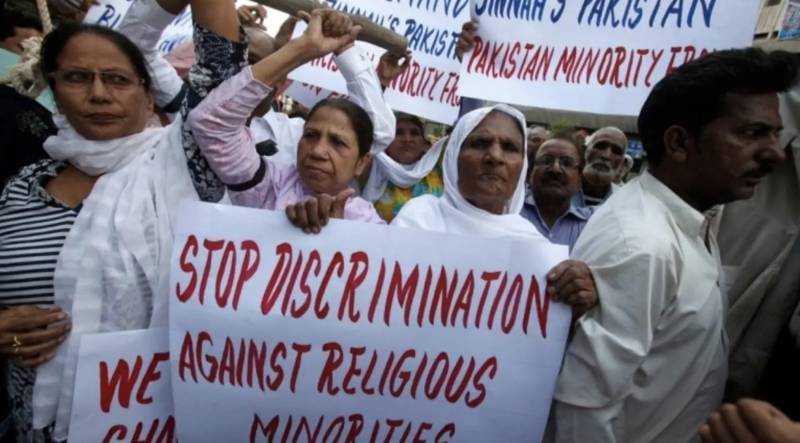
In the realm of national symbolism, Pakistan’s flag stands tall, embodying the nation’s history, struggles, and aspirations. Its composition of white and green evokes a multitude of meanings. However, upon deeper scrutiny, one cannot escape the intricate web of complexities and contradictions that lie within these colors. The juxtaposition of white, signifying minority struggles, and green, symbolizing majority privileges, exposes the uncomfortable truth about the state of chromatic hypocrisy and disconcerting monochromatic confusion in Pakistan.
Decoding the Symbolism
Traditionally, the white color on Pakistan’s flag has been attributed to represent the religious and ethnic minorities dwelling within the nation’s borders. It serves as a symbol of their presence and their invaluable contributions to the fabric of society. It is intended to amplify their struggles and advocate for inclusivity and equality. Nevertheless, it is disheartening to witness how these very struggles often go unnoticed or unaddressed, while the majority population revels in the privileges associated with the profound green hue.
Unveiling the Veil of Chromatic Hypocrisy
Chromatic hypocrisy, a concept that manifests when one claims being colorblind while concurrently clinging to the benefits derived from one’s own racial or ethnic identity, finds its resonance within Pakistan. It unveils itself through the paradoxical situation where we acknowledge the struggles of minorities on one hand, yet perpetuate the existing power dynamics that favor the majority on the other.
The Perpetuation of Privilege
Despite the lofty ideals of equality and inclusivity enshrined in Pakistan’s constitution, the harsh reality on the ground paints a different picture. Socioeconomic disparities, unequal access to education and employment opportunities, and systemic discrimination persist, leaving minority communities marginalized and struggling for their rightful place. By coveting the green hue, we unconsciously perpetuate the privileges enjoyed by the majority, hindering our collective journey towards forging a truly inclusive society.
Pursuing True Inclusivity
To address the disconcerting monochromatic confusion in Pakistan, we must first acknowledge and rectify the inconsistencies between symbolism and reality. True inclusivity necessitates a concerted effort to dismantle the systemic barriers that impede the full participation and flourishing of minority communities within our society. Mere symbolism and gestures are insufficient; we must strive for genuine equality that transcends superficial representation.
Engaging in open and honest conversations regarding the challenges faced by minority communities holds paramount importance in fostering understanding and empathy. By amplifying the voices of those marginalized, we can shed light on their struggles and collectively work towards a more equitable future. Furthermore, educating ourselves about the histories and experiences of diverse communities within Pakistan is crucial, for diversity is not a weakness to be dismissed, but rather a strength to be celebrated.
Charting the Path of Change
To overcome the insidious grip of chromatic hypocrisy, it is imperative to adopt policies that address the root causes of inequality and discrimination. This entails implementing affirmative action measures to ensure equal opportunities for all, nurturing intercultural exchange and understanding, and fostering a society that embraces tolerance and acceptance. By dismantling the barriers that perpetuate privilege, we can forge a path towards a Pakistan that truly celebrates the diversity of its people.
Pakistan’s flag, with its white and green, holds a powerful message about inclusivity and equality. However, the reality on the ground often falls short of these ideals, leading to a state of disconcerting monochromatic confusion. It is our collective responsibility to acknowledge the chromatic hypocrisies that exist and work towards rectifying them. By embracing true inclusivity, promoting dialogue, and dismantling systemic barriers, we can pave the way for a Pakistan that is truly united, diverse, and equitable. Only then can the colors of our flag represent not just symbolic aspirations, but also the lived realities of all its citizens.

